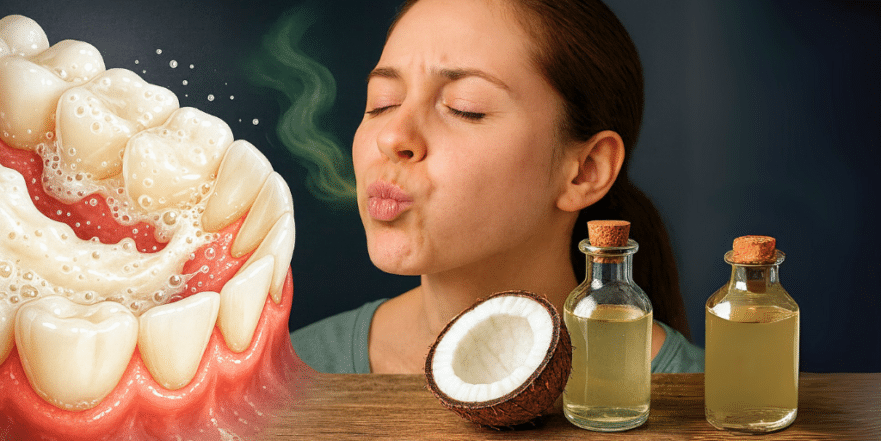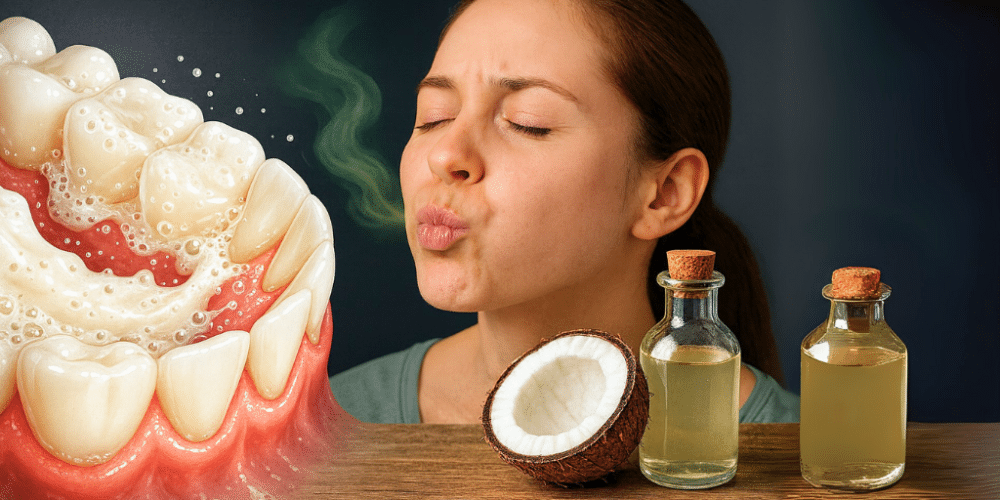
Are you tired of battling bad breath, inflamed gums, or tooth sensitivity with no real solution in sight? What if I told you that the brightly colored, intensely-flavored mouthwash you use every day might actually be making the problem worse? Many of us struggle with oral health issues, reaching for commercial rinses that promise extreme freshness, but we never seem to find a lasting solution. The truth is, many of these products are loaded with ingredients that can do more harm than good, eliminating beneficial bacteria, drying out your mouth, and merely masking the symptoms.
That’s why we’re going to explore seven natural mouthwashes that genuinely work. We’ll uncover which one is the most powerful, how to use them correctly to restore your oral health, and the number one mistake almost everyone makes with those store-bought rinses. It’s time to stop the cycle and give your mouth the balanced, effective care it truly needs.
Key Takeaways
- Commercial Mouthwashes Can Be Harmful: Many contain alcohol that dries out the mouth and antiseptics that kill both good and bad bacteria, disrupting your oral microbiome and often worsening issues like bad breath over time.
- Natural Ingredients Offer Targeted Solutions: Simple, inexpensive ingredients like baking soda, coconut oil, and various herbs can address the root causes of oral problems by balancing pH, removing toxins, and fighting harmful bacteria.
- Proper Usage is Crucial: Natural doesn’t always mean harmless. Ingredients like apple cider vinegar and baking soda must be used correctly (properly diluted and with limited frequency) to prevent damage to tooth enamel.
- Create a Personalized Routine: The most effective approach is to combine different natural rinses into a weekly routine tailored to your specific needs, whether it’s fighting bad breath, reducing gum inflammation, or preventing cavities.
The Problem with Your Commercial Mouthwash
The first mistake nearly everyone makes is trusting those brightly colored rinses that promise an icy blast of freshness. You’ve seen the ads: smiling people gargling for 30 seconds and emerging with dazzling confidence. But there’s something the industry prefers not to tell you. The alcohol that gives you that intense burning sensation—the one you associate with a deep clean—is actually drying out your mouth with every use. Why does this matter so much? A dry mouth is a playground for bad bacteria. When your saliva production decreases, harmful microbes multiply without control, giving them a major advantage.
The problem goes even deeper. Those super-potent antiseptics that claim to kill 99.9% of germs don’t distinguish between good and bad bacteria. The beneficial microbes that maintain balance, prevent fungal overgrowth, and even help with the initial digestion of food are all wiped out by that blue or green liquid you use each morning. This is why, after weeks of use, many people find their bad breath returns with a vengeance, their gums become more inflamed, and the feeling of freshness lasts for a shorter and shorter time. Your mouth is crying out for help, but you keep giving it more of the same. These commercial rinses just cover up the problem, creating a vicious cycle where you need more product to get fewer results. What your mouth truly needs isn’t total sterilization; it needs balance.
7. Baking Soda: The pH Balancer
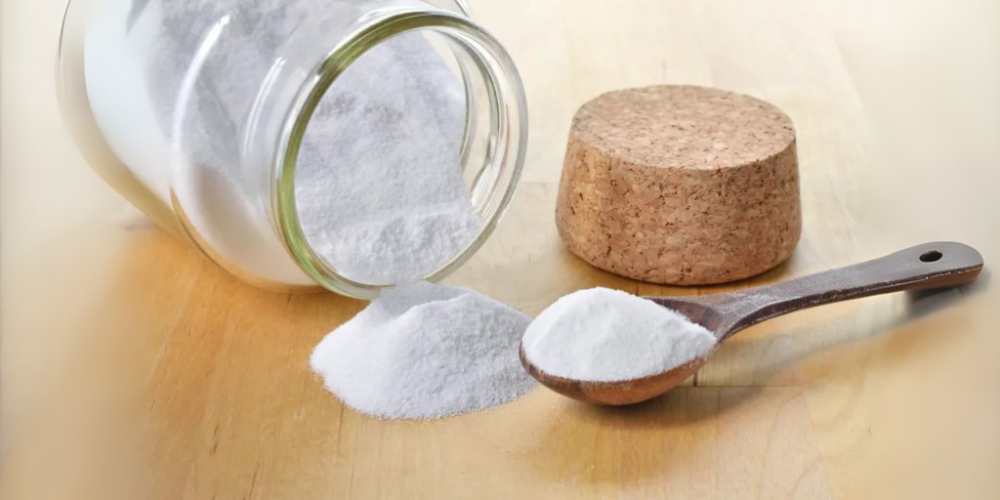
There’s a simple powder that costs less than a dollar and can completely change the game for your oral health: baking soda. This humble ingredient does something no commercial mouthwash can: it changes the very environment where bad bacteria thrive. The bacteria responsible for cavities, bad breath, and gum disease absolutely love acidic environments. They need a low pH to multiply and build the colonies that form plaque. After you eat or drink—especially coffee or sweets—your mouth becomes acidic, creating the perfect party for them.
Baking soda does the exact opposite. It alkalinizes your mouth in seconds, raising the pH and turning that bacterial paradise into a hostile territory. It fundamentally changes the rules of the game. While the bad bacteria struggle to survive, the good bacteria you need can re-establish themselves. However, this power demands respect. You must only use baking soda as a rinse, never as a direct toothpaste. Its abrasive nature can wear down your enamel if scrubbed directly onto your teeth. The perfect ratio is half a teaspoon in a glass of water. Gargle for 30 seconds and spit it out. Once a day, preferably at night, is sufficient. This cleans the slate, allowing your natural saliva to do its protective work while you sleep.
6. Oil Pulling with Coconut Oil: The Deep Toxin Extractor
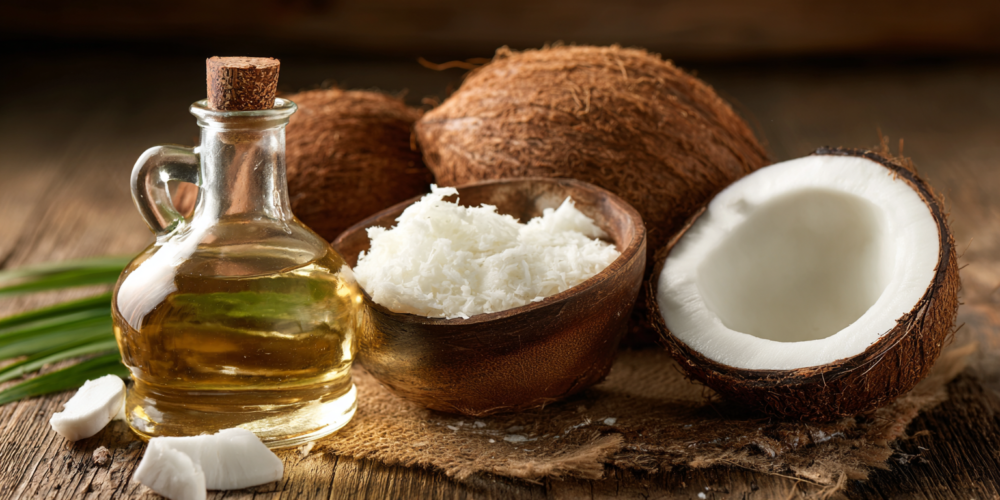
If you’re looking for something that goes beyond changing pH and literally pulls bacteria out of your mouth, there’s an ancient technique that modern dentists are rediscovering: oil pulling. This Ayurvedic practice, with over 3,000 years of history, is a deep-cleaning process that works on a fascinating principle. Coconut oil is the star here, and its power lies in being pure fat.
Why is this important? The cell membranes of bacteria are made of lipids—essentially, fat. When coconut oil comes into contact with these bacteria, their membranes are chemically drawn to and stick to the oil. They get trapped and can’t escape. But it gets even more interesting. Many of the toxins produced by bacteria are fat-soluble, meaning they only dissolve in fat, not water. This is why regular water-based rinses can’t eliminate them. The coconut oil acts like a sponge, absorbing these toxins from your gum tissues. Furthermore, the lauric acid in virgin coconut oil has potent antimicrobial properties, especially against Candida albicans (yeast) and Streptococcus mutans (the primary cavity-causing bacteria). So, while you’re pulling bacteria out, you’re also actively killing them.
The technique requires patience. Take one tablespoon of virgin coconut oil (it will melt in your mouth in seconds) and begin to gently swish it around. This isn’t an aggressive gargle; it’s a slow, steady movement. Pass the oil between your teeth, over your gums, and across your tongue for 15 to 20 minutes. The first 5 minutes, the oil mixes with saliva and traps surface bacteria. Between 5 and 10 minutes, it penetrates deeper into gum pockets. After 10 minutes, it starts extracting deeper toxins. You’ll notice the oil, which starts clear, becomes a milky, thick white. That transformation represents millions of trapped bacteria and toxins. Never swallow this oil. When you’re done, spit it into the trash, not the sink, as it can solidify and clog pipes. Rinse with warm salt water and then brush as usual. The best time is first thing in the morning, on an empty stomach, to remove the bacteria that multiplied overnight.
5. Peppermint & Spearmint: The Instant Freshener

When you need instant freshness and want to neutralize odors on the spot, there’s something that works far better than any chewing gum: peppermint and spearmint. These plants contain menthol, a compound that tricks the cold receptors in your mouth, making you feel a cooling sensation without any actual temperature change. But menthol has a secret weapon: it’s a selective antibacterial. It specifically targets anaerobic bacteria, the ones that live without oxygen in the deepest corners of your mouth.
This is critical because these are the very bacteria that produce volatile sulfur compounds—the gases with a rotten-egg smell that cause the most persistent bad breath. When you gargle with a mint infusion, the menthol penetrates the spaces your brush can’t reach and chemically neutralizes these sulfur compounds on contact. It doesn’t just mask them; it breaks them down. To prepare it, use about 10-15 fresh leaves or two tablespoons of dried mint. Add them to hot, not boiling, water (around 175°F or 80°C) to avoid destroying the essential oils. Cover and steep for 5 minutes, strain, and let it cool to a warm temperature. For an extra boost, add a tiny pinch of sea salt, which helps the menthol penetrate bacterial membranes more effectively. This rinse is perfect for use after meals containing garlic or onion, or as a quick morning rinse for hours of genuine, clean freshness.
4. Clove: The Natural Painkiller
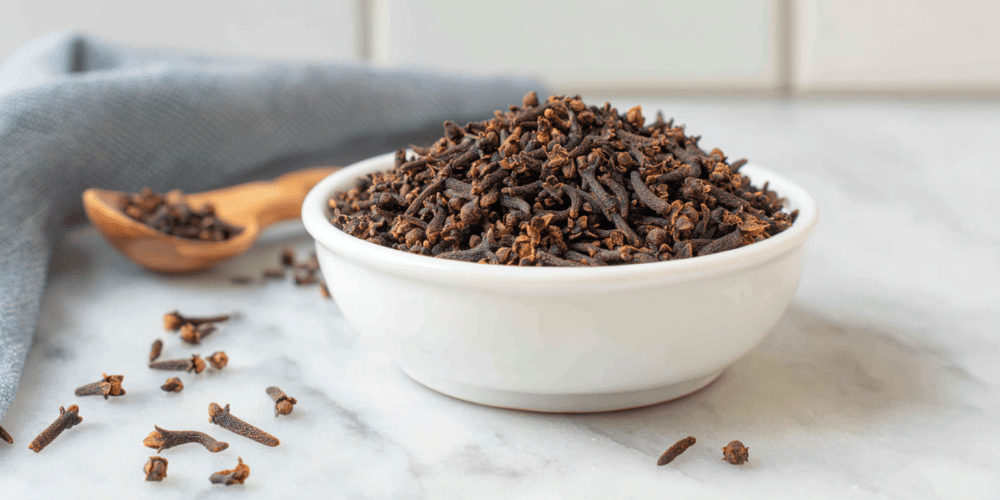
When your problem goes beyond bad breath and you’re facing real pain—when every bite hurts and your gums are throbbing—nature provides an analgesic that dentists have used for over a century: clove. Its medicinal power comes from eugenol, a compound that makes up to 85% of clove essential oil. Eugenol does something unique: it blocks the calcium channels in your nerve endings. In simple terms, this means the pain signal can’t travel from your tooth or gum to your brain. It interrupts the message at the source.
But there’s more. Eugenol is also a potent anti-inflammatory. It reduces the production of prostaglandins, the substances your body releases that cause swelling and pain. So, for inflamed gums or periodontitis, clove not only calms the pain but also reduces the actual tissue inflammation. To prepare a rinse, lightly crush five or six whole cloves to release the eugenol. Place them in a cup of very hot (but not boiling) water, cover, and let steep for 15 minutes. If you have localized pain, hold the rinse in that area for 2 minutes. For general gum inflammation, swish gently for one minute. Be aware that clove is powerful and can cause temporary numbness or a tingling sensation—this is normal. Because of its potency, don’t use it more than twice a day.

